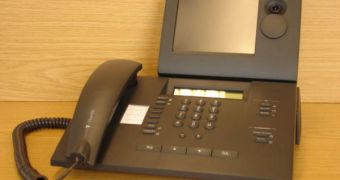Seeking to understand what drives the changes on our faces when we talk over the phone, or in video-conferences, experts at the University of East Anglia (UEA) have developed a new computer software that is able to clone facial expressions, and later reconstruct them into a cloned face. Head tilts and movements can also be recorded, in real-time as well. Scientists hope that, by analyzing them, they could find new ways of manipulating the appearance of a person on the screen, without the other one even knowing it.
They say that expressiveness, identity, race, or even gender could potentially be changed during a live conversation without the other person talking even knowing it. The ability to do this could allow for new types of studies on the human brain, and on the way we recognize things. Already, a recent study has proven that we pay more attention to the head tilts and movements of our friends, when we communicate over the phone, and not necessarily to their gender. In the experiments, the scientists changed the apparent gender of the speaker, but the other person on the line did not realize that.
A number of psychologists in the United States have already begun using these new research tool, in order to challenge outdated beliefs on how people act during conversations. The software was developed by UEA School of Computing Sciences expert Dr. Barry-John Theobald, together with colleagues Dr. Iain Matthews from Disney Research, Prof. Steven Boker from the University of Virginia and Prof. Jeffrey Cohn from the University of Pittsburgh.
“Spoken words are supplemented with non-verbal visual cues to enhance the meaning of what we are saying, signify our emotional state, or provide feedback during a face-to-face conversation. Being able to manipulate these properties in a controlled manner allows us to measure precisely their effects on behavior during conversation. This exciting new technology allows us to manipulate faces in this way for the first time. Many of these effects would otherwise be impossible to achieve, even using highly-skilled actors,” said Dr Theobald.
The expert is also the lead author of a new scientific paper featuring details of the software, published in the June edition of the journal Language and Speech. In addition to its use for research, the new software could be used in the animation industry as well, where highly-complex, life-like characters may be required.

 14 DAY TRIAL //
14 DAY TRIAL //